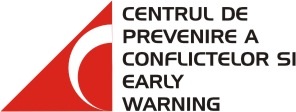The time when the Social Democrat Party (PSD) was comfortably leading in opinion polls has gone. The ruling party returned to the first position after the drop that followed the local elections, yet the margin, of just a few percentage points, to the National Liberal Party (PNL) -Democrat Party (PD) D.A. Alliance keeps it under pressure until the elections day. The battle will be particularly tighter as, unlike PSD, the Alliance has not fired so far many electoral “shots.”
The Alliance‘s strategic withdrawal
Analysts were expecting a veritable political and media attack to be launched by the D.A. Alliance, as a natural consequence of the upward trend which took shape in the local elections. After a period of uncertainty and efforts to reposition, this expectation was not confirmed. For mainly strategic reasons, the Alliance would not take the lead in the electoral campaign; furthermore, it shut off the attack and counterattack cycles imposed by PSD. This strategic withdrawal suggested that PNL and PD failed in their repositioning project.
Although one cannot speak, after the local elections, about a quasi-dominant PSD and an Alliance with insufficient political visibility, both PSD and the Alliance have preserved a certain self-perception inertia. The way in which the ruling party has managed to upset the results of elections for the county councils, and later on the alliance with PUR and extension of the protocol with UDMR, the mounting electoral campaign through PSD’s introducing a direct negative campaign line put a cap on the Alliance’s impetus. Under the new circumstances, PNL and PD’s conduct is similar to the one before the elections. Therefore, the political attack was called off.
Separately, in spite of all efforts to change its image, PSD is facing a growing blockage. Polls conducted by CURS revealed that announcing Adrian Adrian Năstase’s candidature to the presidential office did not increase his, or his party’s electoral scores. Onthe contrary, after the party leading structure was changed and the Special Congress was organised, the PSD leader went down 3 percent in polls. While PSD is making tremendous efforts to stay first in polls, the Alliance, without much trouble, is only one step behind. The ruling party did, for the time being, slow down the Alliance; but what will happen when PNL and PD get to start their engines?
ADA incorporation terms
The PNL-PD D.A. Alliance was established against the political background outlined after the elections in 2000. This background was defined by two major coordinates: the ruling party had grown oversized, while PRM, an undemocratic party, became the party with the second largest parliamentary presence. On the one hand, the political gamut had lost its balance on account of Corneliu Vadim Tudor’s unexpected success; on the other hand, the ruling party had taken a too authoritarian attitude during its rule. The natural option for the two parties in the democratic Opposition, in this case, was to become allies. The basis of this alliance is therefore generated by political constraints.
A comparative look at the contexts in which the current D.A. Alliance and the former CDR operated would be worth while. In 1996, when CDR won the elections, PRM was in power, jointly with PDSR (current PSD). Now, PRM is in the Opposition and undergoes and image democratisation process. In the same year, PDSR was a party which had isolated Romania at an international level. Today, PSD is a member of the Socialist International (SI) and under the incumbent Government the country joined NATO. While CDR was a democratic alliance, in which political parties of all orientations, represented or not in the Parliament, took part, D.A. Alliance is mainly defined in ethical terms (“Justice and Truth”) and it only includes 2 parties, PNL and PD, both being parliamentary parties. Just as today’s PSD is no longer the PDSR back then, the D.A. Alliance is not the former CDR.
Short term offensive
It is quite clear that, in spite of its alliance with PUR, PSD cannot rise in polls by more than 2-3 percent. Even if at present inner conflicts in PSD are not violent, they are still a hidden brake to the ruling party. PSD’s capacity to persuade voters has dropped. The ruling party is only kept up and running by the propaganda oxygen balls. On the other hand, the Alliance has growth potential which it does not, or cannot capitalise on, either because of the force of PSD’s defence, or because of inner problems. In a certain sense, the PSD media blockade has not been broken through, and PNL and PD must find a solution to this problem. One of these solutions could be a powerful short-term offensive, in the electoral campaign, to take full advantage of the mass-media chaos in the respective period. Such a strategy was very useful in the campaign for the local elections in Bucharest, when the Alliance’s candidates managed to go up several tens of percentage points in only two weeks.
Making ready to take over power
A D.A. Alliance electoral offensive liable to turn the elections results to its favour is possible if, for the first time, the Alliance managed to convey some of the image of its strength. PNL and PD leaders must come up with their own convincing explanation of Romanian facts. Through its strategic withdrawal, the Alliance managed to give an articulate indication of the fact that it disjoined the PSD interpretation. Yet this is only a negative definition, and the Alliance has to offer voters its own set of criteria for interpretation, which means a new project and a new vision. The Alliance must prove that its withdrawal from PSD was the consequence of a difference in vision and not the proof of its weakness, at a time that the Alliance is no longer perceived as weak.In the new political context, the ethical message that laid at the basis of the PNL-PD Alliance establishment is no longer enough, and ADA must persuade voters that it can still rule in Romania. More than ever before, the Alliance needs to be seen as a ruling party. What matters is not the governing programme or the leaders able to implement it, but the feeling that the Alliance can rule.
Corollary for the coming elections
Most likely the coming elections will be waged on the TV screen, in direct broadcast debates between Năstase and Theodor Stolojan. Considering that the Alliance’s strength has been so far its moral component, Theodor Stolojan, as representative of the Alliance’s values, is expected to take a head-start. As long as Theodor Stolojan manages to grant outstanding weight to his words and attitudes, the discourse on governance promoted by Adrian Năstase will lose ground. The ability to undertake a moral discourse is the main weakness of the PSD candidate both with the electorate and as a representative model for Ion Iliescu’s heir (with his famous “poor and honest” line). While for the Alliance on the whole proving its strength is crucial, for the would-be candidate the moral discourse will be decisive.









